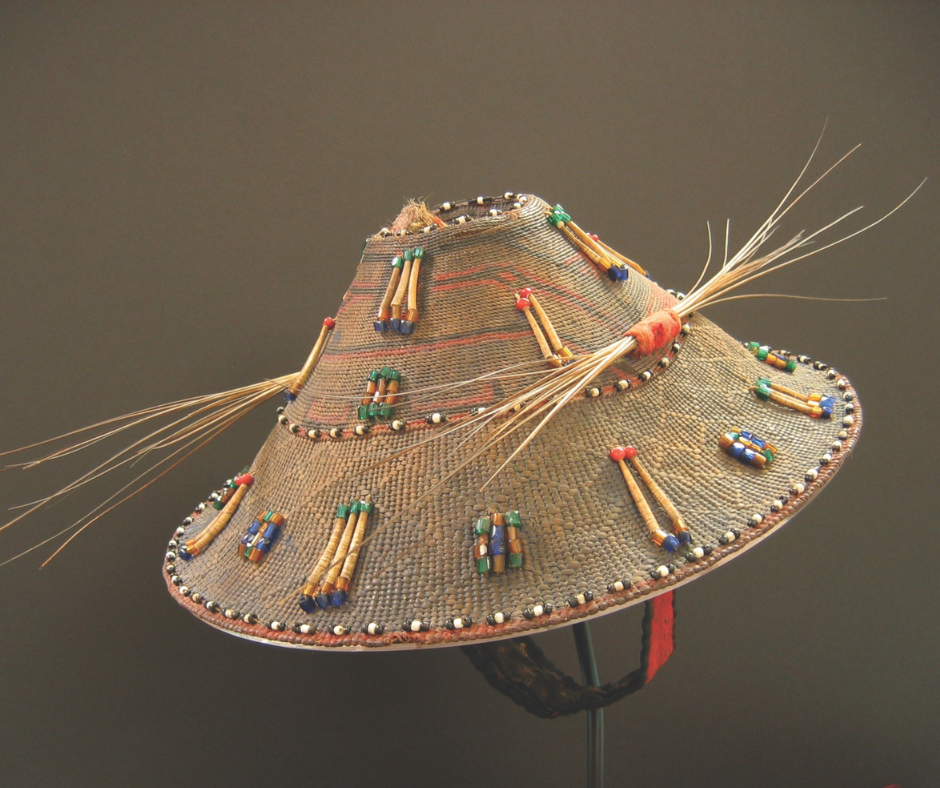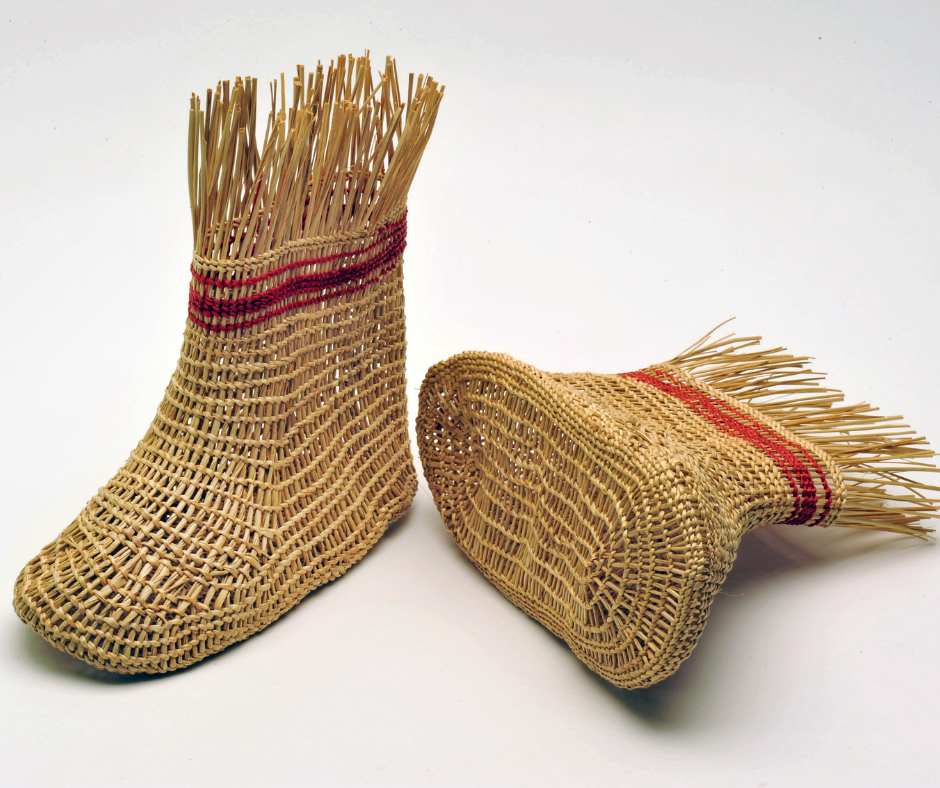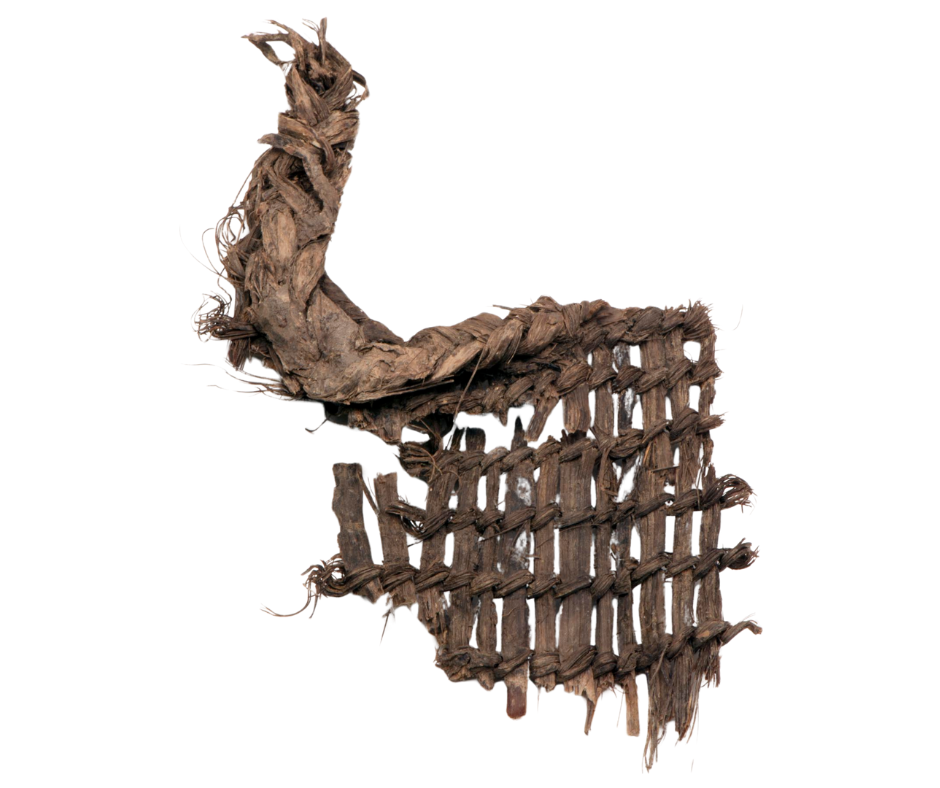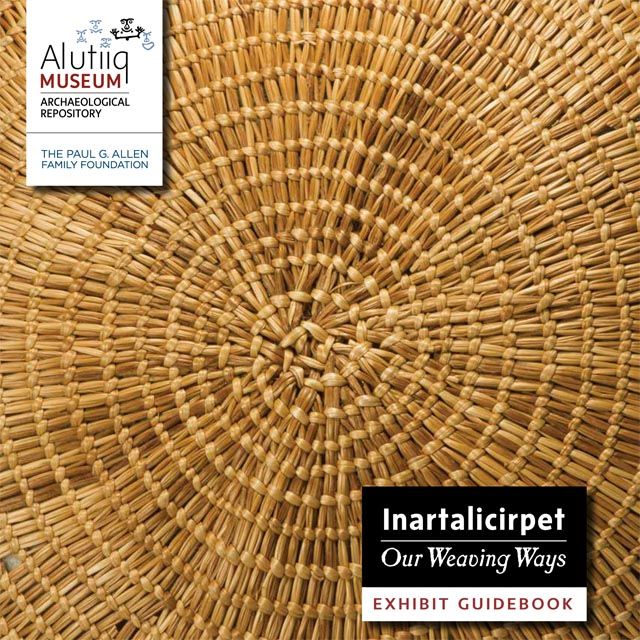Weaving

Beach rye grass on Sitkalidak Island.
If you entered a typical Alutiiq household of the seventeenth century, fine weaving would surround you. Grass mats would line sleeping benches, cover the walls, and hang in doorways. Woven containers for collecting, storing, and cooking food would surround a central fireplace. People would wear woven socks, mitts, and caps. A mother would hold her baby in a woven carrier. And the rafters would hold woven tools, nets for fishing and birding, and braided lines for harpoons and boats.
Weaving was both a functional and aesthetic art. Woven objects served many purposes, yet were made with great care. Alutiiq people once made basketry from a variety of natural fibers. Weavers worked spruce root, grasses, birch bark, baleen, and animal sinew. Today, Kodiak weavers continue to work with spruce root and grass (weg’et). Grass basketry is particularly prized for its extraordinarily fine weave and warm natural color. The most commonly harvested wild grass is beach rye (Latin: Elymus sp.), which weavers cut in coastal meadows between June and September.

Spruce Root Hat

Grass Socks

Baleen Basket Fragment
Weaving Journeys
In 2010, five Alutiiq artists traveled to St. Petersburg, Russia to study ancestral weavings collected by Russian traders. Their visits to two Russian museums and its impact on their work are chronicled in these short videos.
- My Little Basket
- Coral’s Basket Feat
- Coral’s Cabinet
- Grass Socks
- Karluk One Baskets
- Collecting and Curing Grass
- Teaching & Learning
Elizabeth Peterson is learning Alutiiq weaving as an adult, a process that connects her to her ancestors.
A visit to St. Petersburg Russia and a collection of ancestral baskets inspired Coral Chernoff to weave a large carrying basket.
Tour Coral Chernoff’s workshop and see the materials she uses to create her artwork.
Weaving is a tradition in June Pardue’s family. She and her daughter Sofia explain the art and the connection it provides.
Alutiiq Museum registrar Marnie Leist shares ancient Alutiiq basketry from the Karluk One site
Arlene Skinner, Melissa Berns, and others discuss how wild ryegrass becomes weaving material.
Weavers discuss how they learn and share their art.
Supported by the National Park Service Beringian Heritage Program and Frontier Scientists.
Inartalicirpet – Our Weaving Ways

Supported by the Paul G. Allen Family Foundation.
After the Russian conquest of Kodiak, weaving faded from daily practice. The Inartalicirpet exhibit explored the renewal of Alutiiq weaving, a process that began in the 1950s. Studies of closely related Aleut/Unangan weaving traditions, examinations of ancient objects, and trips to Russia to explore historic weavings are reawakening ancestral knowledge in a new generation of weavers. Learn more by downloading the exhibit guide.
